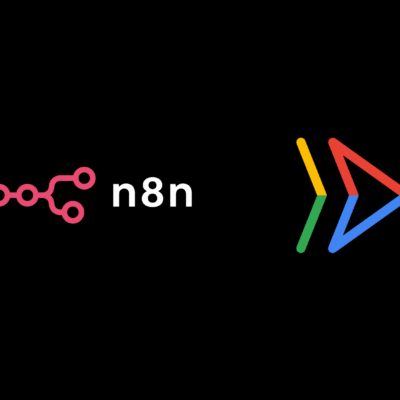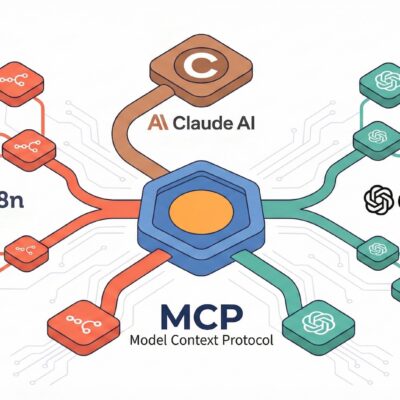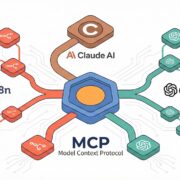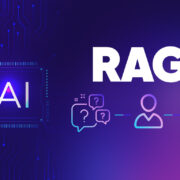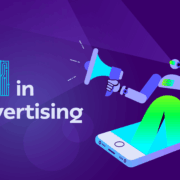We’re standing at the precipice of a monumental shift, one that I believe is even bigger than the software revolution. While the software boom digitalized information, creating a $650 billion market, AI is pioneering something far more impactful: the automation of labor. This opens up a colossal $10 trillion market in the US alone, a vast ocean of opportunity that, to date, remains largely untouched—only 0.2% of the labor market has been automated.
However, the landscape is rapidly changing. With OpenAI venturing deeper into the application layer and established SaaS giants integrating AI, competition will undoubtedly intensify in mainstream sectors. This brings a critical question to the forefront: how do we capitalize on this immense opportunity without getting crushed by the big players?
Based on my experience scaling both an AI agency and an AI SEO software to over $1 million ARR in under two years, and having analyzed hundreds of Y Combinator startups, I’ve identified a powerful strategy. The secret lies in focusing on what many might consider “boring” niches. These overlooked segments are where AI isn’t just creating competitive advantages; it’s forging massive blue ocean opportunities for AI agencies and startups, attracting millions in VC funding to markets previously deemed too small.
I’m excited to share why these profitable AI niches are the future, provide tangible examples of success, and explain exactly how to identify and leverage them—even if you’re not a coder.
The AI Revolution: Why Specialization is Key
The current moment in AI feels historic. We’re witnessing the birth of the first AI-first software businesses, all aiming to capture a slice of that $10 trillion labor market. Yet, much of the application layer remains unwritten, and the vast majority of companies that will define this revolution have yet to be founded.
What’s becoming increasingly clear, as with past technological revolutions like the steam engine or the software boom, is that specialization is paramount for achieving high-value outputs. Just as steam engines needed to be tailored for factory conveyor belts and software specialized for CRMs and mobile apps, AI requires specific adaptation.
Large Language Models (LLMs) are undoubtedly powerful, even magical, but they are also inherently “messy.” Businesses, quite rightly, cannot afford to deal with black boxes, hallucinations, or error-prone workflows. This is precisely why those who specialize AI applications for specific purposes and niches have an unparalleled opportunity. By refining AI to solve precise problems within defined contexts, we transform raw potential into reliable, high-impact solutions.
Navigating the Landscape: Where Big Players Go (and Where They Don’t)
As new AI software emerges daily, and tech behemoths stake their claims, understanding their strategy is crucial. Where will the giants focus their immense resources, and, more importantly, where will they not go, at least initially?
1. Broad, Generic Horizontal Use Cases
Large LLMs and established SaaS players will naturally prioritize wide-reaching, generic applications. Think AI browsers, general automation platforms, or consumer-facing AI applications. These target the lowest common denominator across many industries.
2. Mainstream Markets and Big Industries
Companies like Salesforce, HubSpot, Zendesk, Intercom, and Shopify will inevitably transition into AI-powered versions of their existing offerings (AI CRMs, AI customer service, AI e-commerce hubs). They will leverage their existing market share and data moats to dominate their current domains.
3. Enterprise-First
The biggest fish in the pond are always a priority. Enterprises, with their substantial budgets and complex needs, will continue to attract attention. Furthermore, with AI democratizing software building, many enterprises will increasingly develop custom internal tools.
While opportunities certainly exist in these mainstream and enterprise sectors, the competition will be fierce. For entrepreneurs without deep VC connections, extensive startup experience, or an existing software empire, these areas are often a red ocean.
So, where’s the blue ocean for those of us looking to make a significant impact without getting out-competed?
Identifying Your Blue Ocean: Profitable AI Niches
The true blue ocean lies in the niches that were previously deemed too small for traditional SaaS. These underserved markets have historically been ignored by large players, including the burgeoning LLM giants. To identify these profitable AI niches, I look for three key characteristics:
1. Labor-Heavy Industries
AI excels at automating repetitive or manual tasks. By targeting industries with high labor costs, we can deliver the most significant return on investment (ROI) through AI applications. This direct impact on the bottom line makes our solutions incredibly valuable.
2. Fragmented Markets
These are markets where the top 50 companies hold a low combined market share. Fragmented markets are significantly easier to penetrate and sell into as a new company. There isn’t one dominant player whose territory you’re invading; instead, you’re serving a multitude of smaller entities.
3. Limited Customer Base
Ironically, this is often the sweet spot. These niches have been historically ignored by SaaS providers because their potential customer base was considered too small to justify the investment. As we’ll discuss, AI fundamentally changes this equation.
Many of these businesses are local service providers, a $4 trillion market that has largely been untouched by conventional SaaS. They are incredibly labor-heavy, highly fragmented, and often have potential customer bases of less than 30,000. These markets frequently rely on outdated software, fragmented tech stacks, with minimal to no AI integration. This presents a massive opportunity.
Real-World Examples of Niche AI Success
In the pre-AI era, building specialized software for these small niches was often commercially unviable. However, AI completely flips this dynamic. We’re now seeing a new wave of AI software emerging, many from accelerators like Y Combinator (which only invests in businesses with huge exit potential), proving the viability and massive potential of these small markets.
Here are some compelling examples of profitable AI niches and the companies capitalizing on them:
Barti – An AI operating system designed for eye care clinics. It automates patient and doctor administration, bookings, and follow-ups, tackling a highly specialized and administrative-heavy sector.
VetNo – Automates notes and administrative tasks for veterinary doctors, replacing significant amounts of manual work.
MDHub – An AI front desk and administrative automation tool specifically for mental health clinics.
Nautilus – An AI software solution for car washes, managing everything from memberships and payments to marketing automation.
Auto Ace – An AI voice agent for car dealerships, automatically booking appointments and handling initial inquiries.
Cohesive – A lead generation automation platform tailored for janitorial, landscaping, roofing, and flooring businesses—sectors often lacking sophisticated marketing tools.
Aura AI – An AI receptionist that manages calls and reservations specifically for hotels in Germany, addressing a localized yet labor-intensive need.
You’ll notice a common thread: these are all niches that were largely untouched by the traditional SaaS era due to their perceived small size or specific needs.
While local services are a prime target, certain service agencies (e.g., marketing, lead gen, recruiting) also fit the labor-heavy and fragmented criteria. However, these tend to be more “software native” and have already been served by traditional software, meaning higher competition. Despite this, I believe significant opportunities still exist, but strong distribution channels become even more critical here. This is an approach my team and I have taken with our AI systems for recruiting and SEO agencies.
Two Types of AI Software Winning in Profitable AI Niches
When approaching these underserved markets, I’ve observed two primary types of AI software emerging as clear winners:
1. Function-Specific AI Software
This approach involves building AI tools that automate a specific function within one labor department (e.g., sales, service delivery, marketing) for a niche. These solutions often provide a very fast ROI, making them highly attractive to businesses.
Sales Use Cases – Voice and chatbot applications, automated booking, and intake systems can dramatically increase revenue by speeding up lead response times and reducing lost opportunities. For example, Auto Ace helps car dealerships capture more appointments with AI voice agents.
Operations Automation – Automating admin tasks for service professionals—documentation, client management, invoicing—can save huge amounts of time. VetNo, for instance, streamlines administrative work for vet doctors. My own experience in SEO and content creation involves automating much of the service delivery.
Marketing Use Cases – Many small niche businesses couldn’t afford marketing agencies or dedicated internal teams. AI tools can now make it incredibly easy and affordable for them to create ad creatives or launch lead generation campaigns. Cohesive exemplifies this by enabling small businesses in sectors like janitorial services to run effective lead generation campaigns.
2. Vertical AI SaaS (The Bigger Play)
While function-specific AI is an excellent starting point, the truly massive opportunity often lies in building a vertical AI SaaS for the entire niche. Since many of these “tiny” niches have been so underserved by traditional SaaS, there’s a unique chance to become the main operating system for the entire industry.
A vertical AI SaaS integrates multiple niche-specific AI automations (e.g., for marketing, sales, customer support) with core business functionalities like CRM and payments. Nautilus, for car wash businesses, is a prime example. It combines CRM, payments, and pre-built AI automations for marketing and sales, offering a comprehensive solution. Similarly, Pro caters to home service professionals, and Barti serves eye care clinics, becoming their central operational hub. This offers an even greater opportunity for market dominance and value capture.
Why AI Transforms “Small” Niches into Huge Opportunities
Traditionally, the potential market size for many of these niches was simply too small to attract SaaS companies or venture capitalists. Let’s consider the eye care clinic niche in the US, with approximately 19,000 clinics. A dedicated CRM for this market might seem logical, but the value a generic CRM offers a clinic is limited. With tight budgets and small teams, their software spend tends to be low, perhaps not exceeding $100 a month for a specialized CRM. This translates to a potential market size of only $20 million (19,000 clinics × $100/month × 12 months), a figure far too small for building a successful SaaS business, especially considering the unlikelihood of capturing 100% of the market. This is why these niches were typically served by horizontal SaaS tools (e.g., a generic local business CRM or healthcare CRM).
However, AI software fundamentally shifts this equation, turning these once “small” market sizes into massive opportunities, for two main reasons:
1. Dramatically Increased Customer Lifetime Value (LTV)
AI solutions can drastically increase the LTV of each customer. How? By transforming labor into software. When the right AI software can significantly reduce a company’s internal and external labor costs across sales, marketing, customer service, and operations, the value proposition skyrockets.
A business can now justify spending far more on a product that automates critical functions, effectively increasing the LTV—and thus the potential market size for the software—by an additional 2 to 15 times compared to traditional SaaS.
Consider Barti AI again. By offering a full AI suite that automates multiple labor-intensive processes for eye care clinics, it can charge $1,500 a month. This instantly increases their potential market size by 10 to 15 times what a traditional SaaS might capture in the same niche. This incredible value proposition is why Barti recently raised a $12 million Series A, something I doubt would have happened for a niche-specific platform in the pre-AI era.
2. Significantly Reduced Customer Acquisition Cost (CAC)
Beyond increasing LTV, AI can also lower the cost of acquiring customers (CAC) within a niche. AI-powered marketing and sales tools are highly effective at targeting smaller, defined niches.
For instance, AI voice agents can automate a significant portion of lead qualification, reducing the staffing spend required for your own software business. Similarly, AI chatbots can streamline onboarding and further qualify leads, making the sales cycle more efficient and less resource-intensive. This dual advantage of higher LTV and lower CAC makes previously unviable niches incredibly attractive and profitable.
A Third Factor: Market Expansion Through Efficiency
There’s actually a third compelling reason why AI unlocks massive market potential in these niches: improved efficiency often leads to increased demand.
When an AI software significantly improves a business’s efficiency—say, by having a doctor spend less time on administrative tasks—that doctor can now attend to more clients. Bookings become more efficient, potentially allowing the business to lower prices and increase accessibility. Historically, when services become more efficient and affordable, demand increases. More people might visit the eye doctor twice a year instead of once, or seek care who previously couldn’t afford it. This improved efficiency doesn’t just increase profits for individual businesses; it expands the entire market.
This phenomenon is often called the Jevons Paradox—when efficiency improvements lead to increased consumption and market growth. We’ve seen this repeatedly throughout history. When containerization improved shipping efficiency, it initially displaced some dock workers, yet it led to a massive boom in global trade and actually increased jobs in logistics and warehousing. Similarly, the cloud computing transition replaced some server management jobs but created a huge surge in new internet applications and entirely new categories of DevOps and engineering roles.
With AI, we’re likely to see a similar pattern. While some lower-level work may be displaced, new work will emerge as people manage AI systems, provide human oversight, and handle edge cases. The historical evidence suggests that markets don’t contract; they expand.
How to Start: The Proven Pathway for Entrepreneurs
So, how do you take advantage of this niche opportunity today, assuming you’re not a seasoned coder, don’t have extensive startup experience, and lack significant capital or VC connections?
The beauty of modern AI tools is that building these types of businesses has become dramatically faster and more accessible to anyone. Based on what I’ve seen work repeatedly—including my own journey—the best approach is to start as an AI agency.
Here’s why: You get paid immediately while potentially building the foundation for an AI software business. This is exactly the roadmap I’ve followed with our AI SEO and recruiting systems. It’s what Yonas followed to build Aura AI, and it’s what countless others have used to launch businesses in literally months.
The Roadmap
Learn AI Automation – You can master no-code AI platforms like n8n in just a few weeks. If you haven’t already, I highly recommend taking a comprehensive tutorial on n8n. After that, you’ll likely know more than enough to start an AI agency. These no-code tools allow you to build and deploy highly valuable solutions incredibly fast.
Pick Your Niche – Choose one of these labor-heavy, fragmented niches. Remember, the whole business world is actively looking to implement AI. As of today, roughly 95% of businesses haven’t implemented any AI solutions yet. This is your window.
Go to Market – Start consistently building visibility. Post on LinkedIn, create YouTube content, do cold email outreach, run paid ads, participate in communities. Let people know you do AI automation. You’ll be surprised how many businesses are actively seeking these solutions.
Build Custom Solutions – Start with custom projects for individual clients. Solve their specific pain points. While doing this, you’re learning about their industry, understanding their workflows, and identifying high-impact opportunities.
Identify Patterns – Once you’ve built a few solutions, look for patterns. Which automations delivered the highest ROI? Which problems appear repeatedly across clients? These are your clues to a winning vertical or horizontal play.
Productize and Scale – Once you’ve identified a high-ROI automation that resonates with multiple clients in the same niche, start reselling it. This gives you data to improve the solution, gather testimonials, and refine your offering. This is how great software is actually built—through real customer feedback and iterative improvement.
Build Your MVP – With a proven use case and genuine customer demand, building a minimal viable product (MVP) becomes much faster. You can either use low-code tools to build it yourself or start hiring engineers to help you scale. Unlike traditional SaaS journeys that require 5-10 years, you can now move from custom solutions to a productized MVP in months.
Expand to Vertical AI SaaS – The final step, if you choose to pursue it, is gradually adding more functions and capabilities, potentially building toward a comprehensive vertical AI SaaS or operating system for your chosen niche.
The Historic Moment We’re In
I genuinely believe we’re in the most significant entrepreneurial opportunity of our time. The winners in AI will be those who recognize this moment and act on it now. There’s never been a better time to build something meaningful for yourself.
If you’ve ever considered starting something or building your own business, now is the time. The barriers to entry have never been lower, the demand has never been higher, and the potential has never been greater. By focusing on these “boring,” underserved AI niches, you’re not just building software—you’re fundamentally transforming how entire industries operate, turning overlooked markets into engines for building real wealth.
The path is clear. The opportunity is real. The time is now. Dive in, specialize, serve these forgotten niches with AI-powered solutions, and unlock the million-dollar potential that’s been hiding in plain sight.
Key Takeaways
- The $10 Trillion Opportunity – Only 0.2% of the labor market has been automated. AI is unlocking unprecedented market potential.
- Blue Ocean Strategy – Avoid red ocean competition by targeting small, fragmented, labor-heavy niches ignored by traditional SaaS.
- Two Winning Models – Start with function-specific AI for quick ROI, then evolve toward vertical AI SaaS for market dominance.
- AI Changes the Equation – By increasing customer LTV by 2-15x and reducing CAC, AI makes previously unviable niches incredibly profitable.
- Start as an AI Agency – You can learn, launch, and get paid while building toward a software product in months, not years.
- The Time is Now – 95% of businesses haven’t implemented AI yet. This is your window to build, specialize, and dominate your chosen niche.

